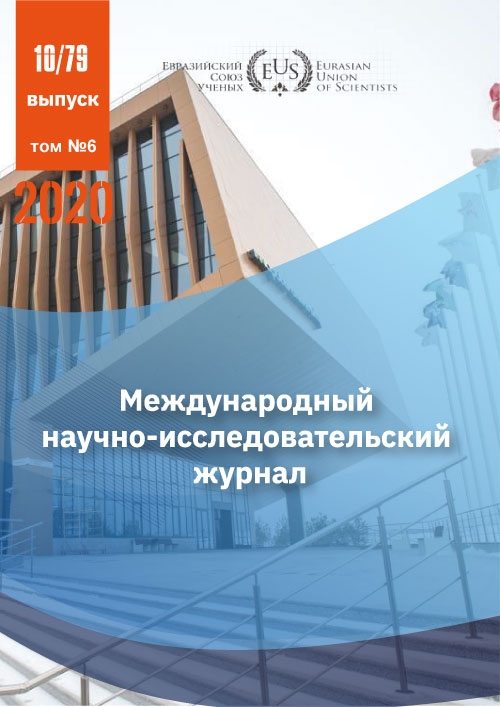MONITORING OF WEAR AND TEAR OF BUILDINGS AND STRUCTURES AND THE DEVELOPMENT
Abstract
The questions of the this article describes the process of monitoring the condition of residential buildings, describes the monitoring process itself, and presents options for optimizing the monitoring process of residential buildings. The phenomenon of monitoring the technical parameters of residential buildings can be called a separate area of construction, which includes a number of issues to create conditions for the safe operation of buildings, the implementation of repairs and reconstruction of buildings, as well as the creation and approval of design and technical documentation.
References
2. СП 13 102-2003 «Правила обследовани.я несущи.х строительны.х конструкций зданий и сооружений».
3. Анп·илов С.М. Сп·особ строительств.а энергоэффективных, экологически-безоп·асны.х сооружений из сборны.х конструкций / Анп·илов С.М., Гайнуллин М.М., Ерышев В.А., Мурашкин В.Г., Мурашкин Г.В., Римшин В.И., Сорочайкин А.Н. // патент на изобретение RUS 2582241 16.06.2014.
4. Введенский П.В. Современные приборы мониторинга и диагностики промышленных сооружений [Текст] /П.В. Введенский //Промышленная безопасность на взрывопожарных и химически опасных производственных объектах. Технический надзор, диагностика и экспертиза, 2019.- С.25-27
5. Мясников Н. Н. Анализ существующей нормативно-технической базы для оценки технического состояния зданий и сооружений / Н. Н. Мясников. — Текст : непосредственный // Молодой ученый. — 2019. — № 48 — С. 36-38. — URL: https://moluch.ru/archive/234/54272/ (дата обращения: 15.10.2020).
6. Мищенко В.Я. Cоциально-экономическая эффективность мониторинга жилой застройки / В.Я. Мищенко // Научный вестник Воронежского государственного архитектурно-строительного университета. Строительство и архитектура. 2020. - № 1. - С. 103-107.
7. Потапкин Е.В. Мониторинг существующих зданий и возводимых объектов – единый механизм строительства [Текст]/ Е.В. Потапкин//Промышленное и гражданское строительство, 2019. - №12. – С. 24-25
8. Харебов В.Г. Система комплексного диагностического мониторинга объектов [Текст]/В.Г. Харебов, Ю.П. Бородин, В.А. Шапорев //В мире неразрушающего контроля, 2020. - №4. – С. 30-36
CC BY-ND
A work licensed in this way allows the following:
1. The freedom to use and perform the work: The licensee must be allowed to make any use, private or public, of the work.
2. The freedom to study the work and apply the information: The licensee must be allowed to examine the work and to use the knowledge gained from the work in any way. The license may not, for example, restrict "reverse engineering."
2. The freedom to redistribute copies: Copies may be sold, swapped or given away for free, in the same form as the original.







